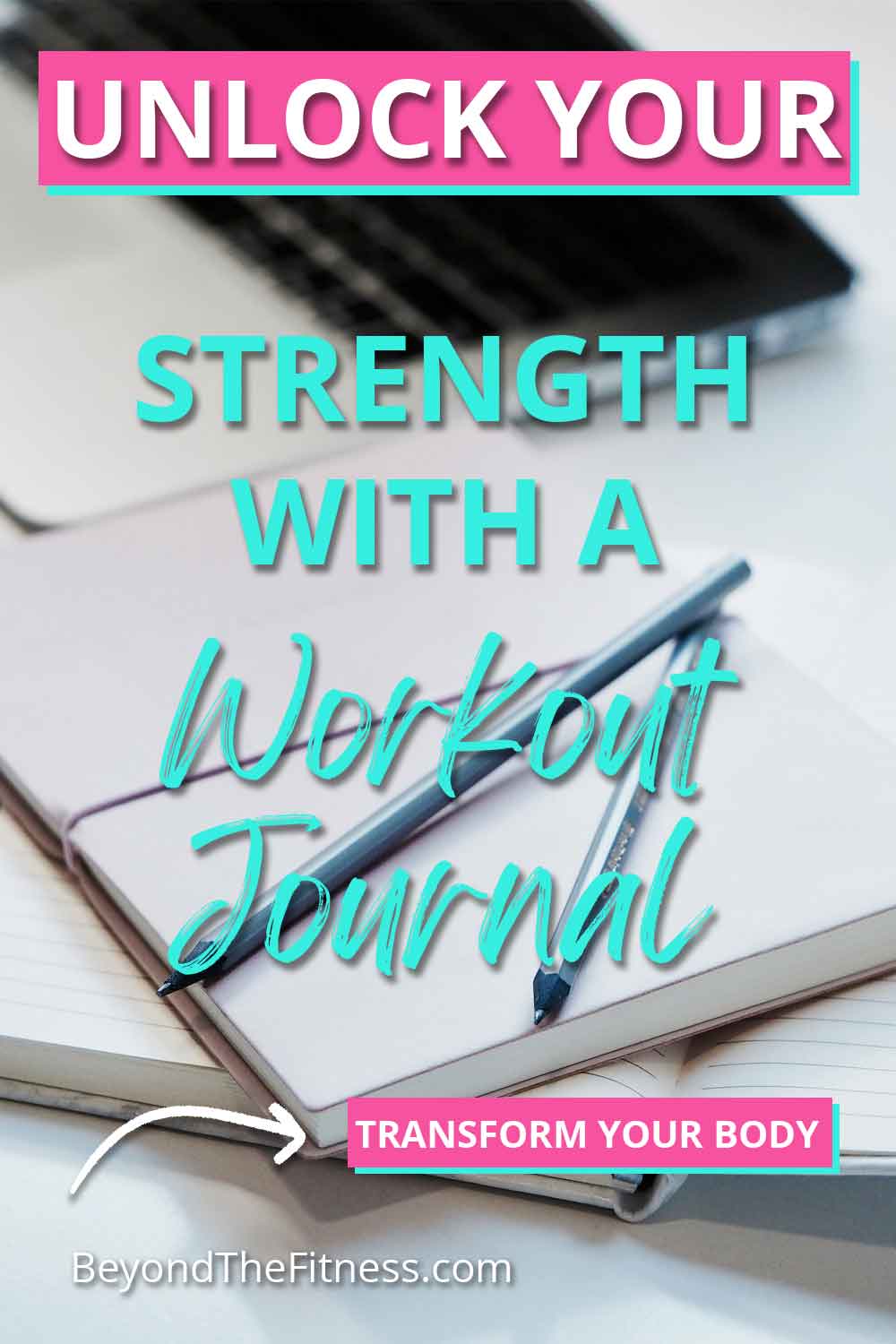When I first started my fitness journey, I quickly realized that tracking my progress was just as important as setting goals. A fitness journal became my secret weapon—a tool that helped me stay organized, motivated, and aware of my growth. Today, I want to share why keeping a fitness journal can be a game-changer for you, too, and how you can make it work with a fitness planner free of stress and overwhelm.
Why You Need a Fitness Journal
A fitness journal is more than just a notebook. It’s a space where you can track workouts, meals, progress, and even your thoughts. By writing things down, I’ve learned to stay focused, celebrate small wins, and figure out what works best for my body.
Track Your Progress Easily
When I write down my workouts—like the number of squats I did or the miles I ran—it’s easier to see how far I’ve come. Even on days when I feel stuck, looking back at my journal shows me that I’m improving, even if it’s little by little.
Stay Accountable to Yourself
It’s easy to make excuses when you’re not tracking what you do. A fitness journal keeps me honest. If I skip a workout or overdo it on snacks, it’s right there on paper. This helps me stay on track without feeling guilty.
Understand What Works for You
Have you ever wondered why some workouts feel amazing while others leave you drained? Writing down how I feel after exercising or eating helps me notice patterns. For example, I learned that certain foods give me energy while others make me sluggish.
What to Include in Your Fitness Journal
Creating a fitness journal isn’t complicated. I started small, focusing on the basics, and added more details as I got the hang of it. Here are some ideas you can try:
Workout Log
Write down:
- The exercises you do
- How many reps and sets
- The weight you use (if any)
- How long your workout lasts
Meal Tracker
Keep track of:
- What you eat and drink
- Portion sizes
- How your meals make you feel
Goals and Achievements
I like to set weekly or monthly goals. For example, I might aim to drink more water or run a little faster. When I hit those goals, I write it down—it’s a great confidence booster!
Mood and Energy Levels
Some days, I feel like I can conquer the world. Other days, not so much. Writing down how I feel helps me connect the dots between my mood, energy, and habits.
How to Start Your Fitness Journal
Starting doesn’t have to be expensive or fancy. I’ve used everything from a blank notebook to a fitness planner free printable I found online.
Pick a Format That Works for You
- Digital: Apps and online templates are great if you prefer your phone or tablet.
- Paper: A simple notebook or planner lets you get creative with colors, stickers, or drawings.
Set Aside a Few Minutes Each Day
I usually spend about 5–10 minutes updating my journal. It’s easiest to do it after a workout or meal when the details are fresh in my mind.
Be Honest with Yourself
Your journal is for you. Don’t feel like you have to write only the good stuff. If you miss a workout or have a tough day, jot it down. This helps you learn and grow.
Tips to Stay Consistent
When I first started, I sometimes forgot to update my journal. Over time, I found ways to stay consistent without feeling like it was a chore.
Make It Fun
I use colorful pens, doodles, and motivational stickers to keep my journal exciting. You can also write little notes to yourself, like “You crushed it today!”
Tie It to a Habit
I update my journal right after my workout or while sipping my post-workout smoothie. Pairing it with a habit you already do makes it easier to remember.
Celebrate Small Wins
If you’ve been consistent for a week or hit a new personal best, take a moment to celebrate. Even something small, like writing “Great job!” in your journal, can keep you motivated.
How a Fitness Journal Improves Your Results
Before I started journaling, I often felt like I was spinning my wheels, working hard but not seeing results. Tracking my progress changed everything.
Boosts Motivation
Seeing my improvements—like running longer or lifting heavier—reminds me that my hard work is paying off.
Helps You Overcome Plateaus
Plateaus happen to everyone, but a fitness journal helps me identify what might be causing them. Maybe I need to switch up my workouts or get more sleep.
Keeps Your Goals Clear
When I write down my goals, they feel more real. I’m not just saying, “I want to get fit.” Instead, I’m aiming for specific things, like “I want to do 20 push-ups in a row.”
Get Started with a Fitness Planner Free Today
If you’re ready to unlock your potential, there’s no better time to start than now. You don’t need anything fancy—just a notebook or a fitness planner free printable to kick things off.
By tracking your workouts, meals, and progress, you’ll not only see better results but also feel more in control of your fitness journey. Take it from me—this simple habit can make a world of difference!
Creative Ways to Use Your Fitness Journal
Over time, I’ve discovered that a fitness journal doesn’t have to be boring or repetitive. It can be a creative outlet and a personal space to express yourself while staying on track with your health goals. Here are some unique ways I like to use mine:
Add Photos and Visuals
Sometimes, I take pictures of my meals, progress, or workout setups and tape them into my journal. Seeing these images makes the journal feel more personal and helps me remember the little things that bring joy to my fitness journey.
Include Motivational Quotes or Notes
Whenever I come across a quote that resonates with me, I write it in my journal. I also like to leave myself notes for tough days, like “You’ve got this!” or “Remember why you started.”
You Might Be Interested In: Learning more about The Complete Smoothie Detox & Weight Loss Program
Track Your Favorite Workouts
I’ve created a section in my journal to jot down workouts I love—like a circuit routine or a fun yoga flow. It’s great to flip back and find inspiration when I feel like trying something different.
Create Progress Charts
Visual learners, this one’s for you! Drawing simple charts or graphs to track things like weight lifted, miles run, or even water intake can make your progress super easy to see at a glance.
How Journaling Affects Your Mindset
When I first started journaling, I thought it was just about staying organized. But over time, I realized how much it impacted my mindset.
Building Confidence
Every time I write about a success—no matter how small—I feel more confident in my abilities. Whether it’s finishing a tough workout or sticking to healthy meals for a week, seeing it written down makes it feel more real.
Managing Stress
Life gets hectic, and sometimes fitness feels like just another thing on the to-do list. Writing in my journal helps me slow down and reflect. I’ve noticed that taking a few minutes to write about my day reduces my stress and helps me refocus.
Creating a Positive Feedback Loop
Writing about the things that went well creates a cycle of positivity. The more I focus on what’s working, the more motivated I feel to keep going.
Fitness Journaling for Specific Goals
Whether your goal is to lose weight, build muscle, or improve your overall health, a fitness journal can help you get there faster. Here’s how I’ve tailored my journal for different goals:
Weight Loss
When I was focused on losing weight, I used my journal to track:
- Calories consumed and burned
- Weekly weigh-ins
- Non-scale victories (like fitting into old jeans or having more energy)
I also made sure to track how I felt emotionally, which helped me notice patterns, like stress eating or craving sweets when I didn’t get enough sleep.
Building Muscle
For muscle-building, I tracked:
- Strength progress (e.g., adding more weight to my lifts)
- Protein intake (I’d write down high-protein meals or snacks I enjoyed)
- Rest and recovery (I noted how much sleep I got and whether I felt sore)
Seeing my strength improve over time kept me motivated, even when progress felt slow.
Improving Cardio Fitness
When I wanted to boost my cardio endurance, I focused on:
- Distance and time for each run or cardio session
- Heart rate during workouts (I used a fitness tracker to monitor this)
- How I felt after each session (Was I out of breath? Did I recover quickly?)
How to Overcome Common Fitness Journal Challenges
Let’s be honest—not every day is perfect. There were times when I struggled to stay consistent with my journal or felt unsure about what to write. Here’s how I overcame those challenges:
Feeling Overwhelmed
At first, I tried to track too many things at once, which felt overwhelming. I simplified by focusing on just two or three key areas, like workouts and meals. As I got more comfortable, I added more details.
Forgetting to Update It
To fix this, I set a reminder on my phone. I also kept my journal in a spot I couldn’t miss, like on my kitchen counter or bedside table.
Getting Stuck in a Rut
Sometimes, journaling felt repetitive. To keep things fresh, I switched up my approach—adding doodles, trying a new format, or writing about something fun, like my favorite workout gear.
Why a Fitness Planner Free Resource Can Help
When I started my fitness journal, I didn’t want to spend money on expensive planners. That’s when I discovered free fitness planner printables online. These are great because they’re customizable and easy to use.
What to Look for in a Free Fitness Planner
- Sections for Goals: A good planner should help you define what you want to achieve.
- Workout and Meal Tracking: These are must-haves for staying on top of your routine.
- Daily, Weekly, or Monthly Layouts: Choose one that fits your lifestyle. I like weekly layouts because they give me a big-picture view of my progress.
How to Find Free Fitness Planners
There are plenty of websites that offer downloadable templates. Just search for “fitness planner free” to find options that suit your needs. I’ve printed out templates for everything from workout schedules to water trackers!
The Benefits of Sharing Your Journey
While a fitness journal is a personal tool, sharing parts of your journey can be inspiring for others—and for you!
Accountability and Support
When I shared my goals with friends or joined an online group, I felt more accountable. People cheered me on, and I got great tips from others who were on similar journeys.
Inspiring Others
You never know who might be inspired by your story. Sharing a picture of your journal or talking about how it’s helped you could motivate someone else to start their own.
Getting New Ideas
When I see how others use their fitness journals, it sparks new ideas for mine. Whether it’s a cool layout or a creative way to track progress, there’s always something to learn.
Fitness Journaling for Busy Schedules
Life gets busy, but a fitness journal can still fit into your routine, no matter how packed your schedule is.
Keep It Simple
If you’re short on time, focus on just one thing each day—like logging your workout or writing down your main goal. Even a quick note is better than nothing.
Use a Mobile Option
When I’m on the go, I use a note-taking app on my phone to jot things down. Later, I transfer it to my journal.
Set Realistic Expectations
You don’t have to write a novel every day. Some days, I only write a sentence or two, and that’s okay. The key is consistency, not perfection.
Looking Ahead: Your Fitness Journey Awaits
As I continue to use my fitness journal, I’m reminded that this isn’t just about reaching a goal—it’s about the process. The habits I’ve built, the lessons I’ve learned, and the confidence I’ve gained are all part of a bigger picture.
By starting your own fitness journal, you’re taking a powerful step toward unlocking your potential. Whether you’re using a blank notebook or a fitness planner free printable, the important thing is to start. Your future self will thank you for it!







